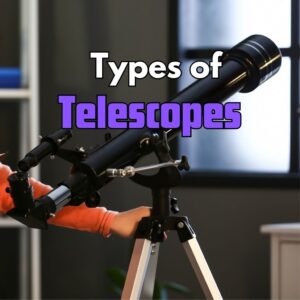This site contains affiliate links to products. I may receive a commission for purchases made through these links.
I’ve always been fascinated by the stars. There’s something magical about looking up at the night sky and seeing the twinkling lights of distant galaxies. But did you know you don’t have to break the bank to enjoy some stellar astro-tourism?
Astro-tourism is a growing trend in travel, with more and more people seeking out dark sky destinations to marvel at the cosmos. The best part? You don’t need a big budget to join in.
Explore Budget-Friendly Dark Sky Parks
One of the best ways to indulge in astro-tourism is by visiting Dark Sky Parks. These are specially designated regions, protected by law from light pollution. Their aim? To ensure an unparalleled experience of the night sky for everyone. Let’s delve into this budget-friendly phenomenon.
Offering an experience like no other, these parks are spread across various locations around the globe. They are suitable for all budget sizes, emphasizing that experiencing our vast universe should not break the bank.
The International Dark-Sky Association (IDA), a non-profit organization, is responsible for designating these Dark Sky Parks. Up until 2019, the IDA reported a total of 130 certified parks worldwide – a testament to the growing trend of astro-tourism.
You might be wondering: Where are these parks? Well, they are everywhere. From the US to Hungary, there’s a Dark Sky Park ready for your stargazing adventure.
- Cherry Springs State Park, in Pennsylvania, USA, became the first park in the eastern US to receive Dark Sky Park status back in 2008.
- Hortobágy National Park in Hungary is Europe’s biggest contiguous natural grassland, earning its Dark Sky Park status in 2011.
- The NamibRand Nature Reserve in Namibia, won its status in 2012, and it’s now recognized as one of the best stargazing sites due to its near-zero light pollution.
There are many more parks around the world, each offering a unique experience. For the budget-conscious astro-tourist, these parks offer a fantastic retreat from the busy rush of life, while still being affordable.
Here’s a quick look at the data:
| Park Name | Location | Year of Dark Sky Park Status |
|---|---|---|
| Cherry Springs State Park | Pennsylvania, USA | 2008 |
| Hortobágy National Park | Hungary | 2011 |
| NamibRand Nature Reserve | Namibia | 2012 |
That’s quite a list of budget-friendly dark sky parks, and it keeps getting longer. Whether you’re a seasoned astro-tourist or just dipping your toes into this exciting trend, these parks are a must-visit. Affordable, accessible, and absolutely breathtaking – what’s not to love about Dark Sky Parks?
Attend Stargazing Events and Festivals
Another fantastic, wallet-friendly route to delve into astro-tourism is by attending stargazing events and festivals. These events provide an excellent opportunity not only to marvel at celestial bodies, but also to learn from experts present at the event. From meteor showers to lunar eclipses, these events are often hosted during significant astronomical occurrences.
Star Festivals around the globe are gaining popularity. One such event is the Oregon Star Party held annually in the Ochoco National Forest, far from city lights. It’s a dream come true for dedicated stargazers, with its dark skies and panel of astronomy experts. Digital presentations, workshops, and children’s programs make it worth every penny spent. Another coveted event on the astro-tourism map is the Jasper Dark Sky Festival in Canada, which prides itself on its engaging line-up of events and celebrity speakers.
The United States also hosts the Oklahoma Star Party (Okie-Tex), known for its dark skies and wide array of recreational activities. The event is kid-friendly, amplifying the astro-tour benefits.
| Event | Location | Special Attractions |
|---|---|---|
| Oregon Star Party | Ochoco National Forest, Oregon | Digital presentations, workshops, children’s programs |
| Jasper Dark Sky Festival | Jasper, Canada | Celebrity speakers, line-up of events |
| Oklahoma Star Party (Okie-Tex) | Kenton, Oklahoma | Kid-friendly, recreational activities |
These events often do charge an admission fee, but it’s typically less than you would pay for a high-end telescope. Plus, some of these admission fees go towards conservation efforts, so you’re also helping to preserve those pristine dark skies for future generations.
Don’t forget local astronomy clubs as a pocket-friendly gateway to astro-tourism. Most major cities have at least one of these clubs, often hosting their own stargazing events. Memberships to these clubs won’t break the bank and can offer sessions with high-quality telescopes. They also offer educational resources and the chance to hobnob with both newbies and seasoned astro-geeks.
Take Advantage of Low-Cost Astronomy Apps and Websites
In the digital age, it’s not only vast open spaces that offer astro-tourist experiences. Highly functional, user-friendly and inexpensive astronomy apps and websites provide an intro to the celestial sphere right from the comfort of your home. These platforms display an interactive universe filled with stars, constellations, and other astral bodies – a perfect way to prep before a night of stargazing.
Some apps and websites even offer AR (Augmented Reality) tours of the night sky, so you can simply point your smartphone towards the sky and see names and images of celestial bodies projected on your screen. Let’s delve into a few low-cost options that can enhance your astronomical adventures.
SkyView, for instance, is a popular go-to app for astro-tourism enthusiasts. It translates complex astronomical data into a user-friendly interface. Navigating through the night sky becomes an easy, educational experience. And the best part? It’s absolutely free!
Star Walk 2 is another low-cost app available for both iOS and Android platforms. The visually appealing app has an interactive star chart and provides information on various celestial bodies. While a basic version is available for free, the full version comes at a small price.
As for websites, Stellarium Web is an excellent platform that turns your web browser into a virtual planetarium. It provides a realistic sky in 3D, just like what you see with the naked eye, binoculars or a telescope. It’s free and suitable for both beginners and advanced astronomers.
Let’s glance at some of these options in a quick rundown:
| Website/App | Price | Platform |
|---|---|---|
| SkyView | Free | iOS, Android |
| Star Walk 2 | Free, $2.99 for full version | iOS, Android |
| Stellarium Web | Free | Web |
Whether you’re prepping for a trip to a Dark Sky Park or simply looking to explore the universe from your backyard, these resources have you covered. A cost-effective way to explore the cosmos, these platforms serve as anyone’s gateway to the world of astro-tourism.
Consider Camping or Staying in Budget Accommodations
Finding the perfect place to stay can often take a large bite out of your budget. But when it comes to stargazing, I’ve found that this is where I can cut costs and enhance my experience. Camping is one of the best ways to fully immerse in the world of stars. You’re out in the open, away from city lights and closer to the starlit sky.
There are many astro-tourism destinations worldwide that provide budget-friendly camping options. From national parks like Joshua Tree in California, USA to more remote places like Tekapo, New Zealand, you often have the freedom to set up camp and marvel at the celestial night sky. And the best part? The upper limit to your spending is basically just the cost of camping gear.
If camping isn’t really your style, there are still plenty of other alternatives. Consider staying at budget accommodations like hostels or guesthouses located nearby prime stargazing locations. Many of these accommodations often even provide telescope facilities or organize special stargazing events. You don’t have to give up on comforts or burn a hole in your wallet to experience the amazing astral sights our world has to offer.
Of course, there’s a lot to consider when deciding where to stay. Things like location, amenities, ease of access to prime stargazing spots, and cost all play a role. Do your research, go through reviews and ratings on travel platforms like Airbnb or Booking.com, and most importantly, align your choices with your personal comfort and budget limitations.
But always remember: you don’t have to break the bank to enjoy the magic of the night sky. From stargazing apps to camping under the stars, astro-tourism can be a budget-friendly pursuit, opening up a universe of possibilities for anyone interested in exploring the cosmos.
Pack Your Own Telescope and Binoculars
Let’s face it, the heart of astro-tourism is stargazing, and the most important gear for this adventure is a telescope or binoculars. Investing in your own equipment can significantly enhance your experience and make astro-tourism more cost-effective in the long run. Sure, these items can be a bit pricey upfront, but trust me, it’s a worthwhile investment if you’re serious about your stargazing.
There’s a wide range of options available, from budget-friendly models to more high-end offerings. In fact, you’d be surprised at how affordable a decent telescope or pair of binoculars can be. For those just starting out, a simple pair of binoculars often makes more sense than a telescope. They’re cheaper, more portable, and perfect for beginners who want a taste of the night sky without getting too technical.
Browsing for telescopes, you’ll find a plethora of choices from reflector to refractor, compound, and more. Don’t get overwhelmed! For beginners, starting with a compact, user-friendly, and less expensive telescope such as a refractor style could be a good option. Once you’ve got the hang of it and ready to delve deeper into the world of astronomy, you can then gradually upgrade your equipment.
Also, don’t forget to buy a stable tripod. It’s as important as the telescope itself in having an enjoyable and hassle-free stargazing experience. Remember, it’s better to get set up properly from the start than realise halfway through a stargazing event that your telescope is shaking every time you move or the wind blows!
Being able to witness the grandeur of the cosmos through your own gear provides a sense of accomplishment and enhances the experience by multifold. With your own, familiar equipment, you can plan impromptu stargazing sessions at your convenience, without having to plan ahead or wait for scheduled events at stargazing locations. Moreover, you’re not bound by rental time limits, and you can take your time to savour every twinkling beauty. Wouldn’t that be wonderful? Let’s just say that the stars are the limit when you’re packing your own telescope or binoculars for astro-tourism.
Wiith your own gear and the right apps and websites, you’ll be on track to explore the night sky with freedom and flexibility. And isn’t that what astro-tourism is all about?
Conclusion
Astro-tourism doesn’t have to break the bank. With the right approach, it’s possible to marvel at the cosmos without emptying your wallet. Dark Sky Parks, stargazing events, astronomy clubs, and digital resources offer budget-friendly gateways to the stars. Having your own gear, starting with binoculars and moving up to a telescope when you’re ready, offers flexibility and endless stargazing opportunities. So why wait? It’s time to explore the night sky and immerse yourself in the wonders of the universe. Remember, the stars are not just for astronomers – they’re for everyone. And with these budget-friendly tips, they’re more accessible than ever. Get started on your astro-tourism journey today.




